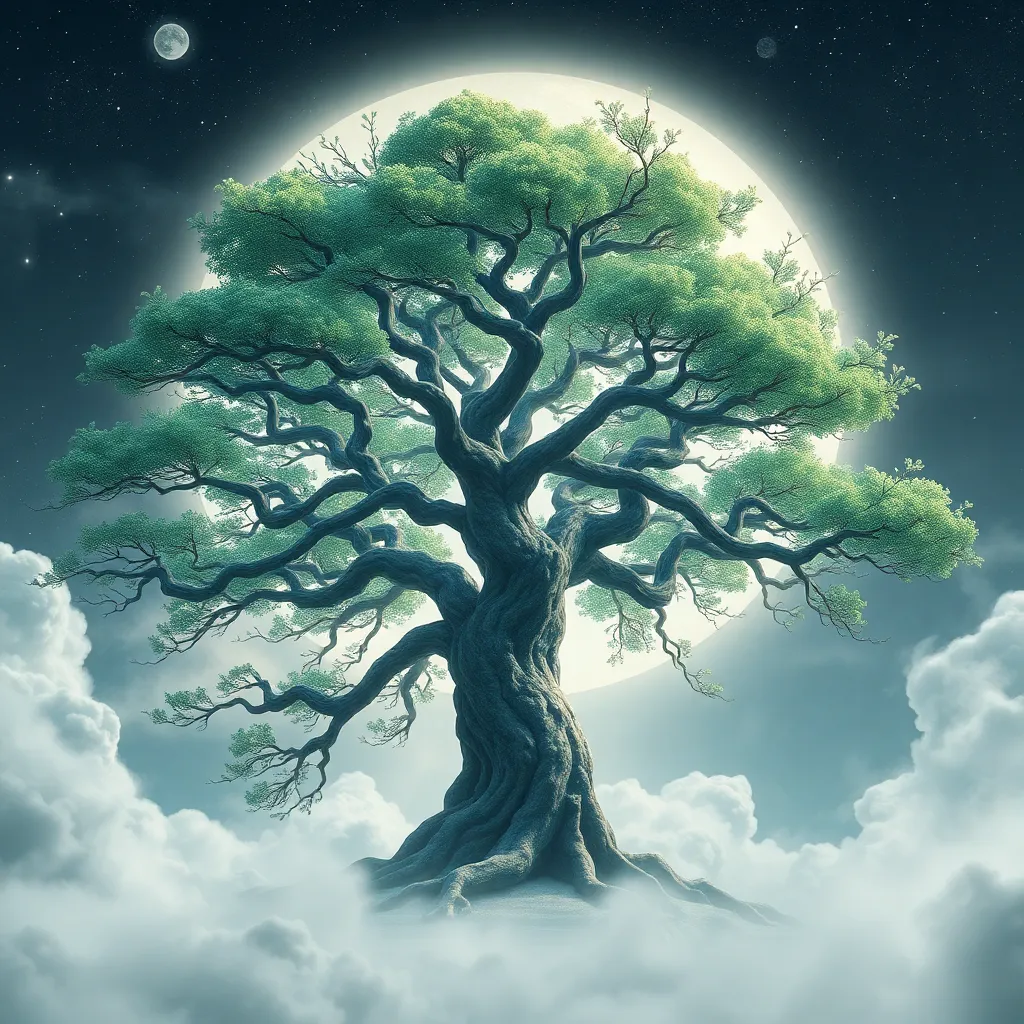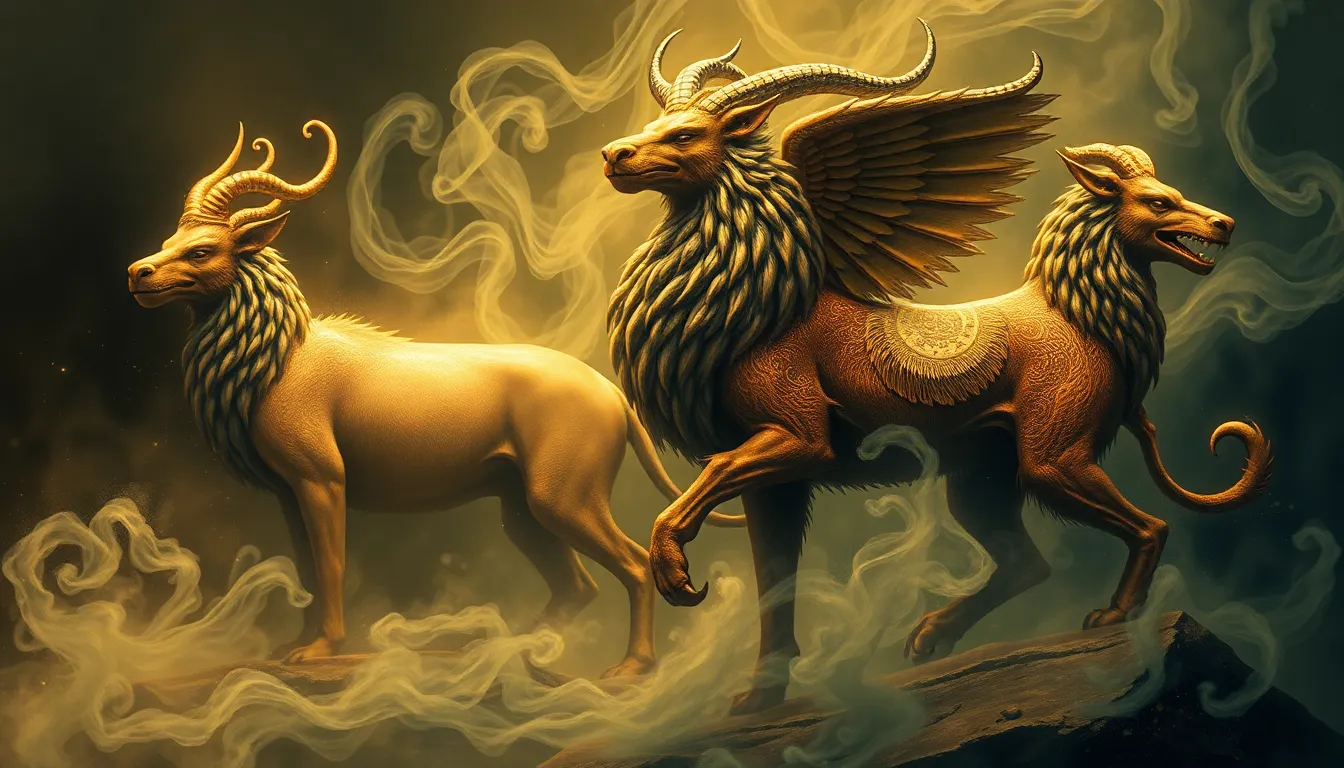The World Tree in Japanese Mythology: The Sacred Tree and the Realm of the Gods
I. Introduction
Japanese mythology is a rich tapestry of stories, gods, and spiritual beliefs deeply intertwined with nature. One of the most fascinating concepts emerging from this tradition is that of the World Tree, a symbolic representation of the universe and a bridge between the mortal realm and the divine. Trees, in general, have held significant cultural and spiritual importance across various mythologies around the world, often embodying life, wisdom, and connectivity.
II. The Concept of the World Tree
A. Definition and characteristics of the World Tree
The World Tree is typically depicted as a colossal tree that connects the different realms of existence. In Japanese mythology, this concept is less explicitly defined than in other cultures but can be inferred from various mythological narratives and practices. The World Tree serves as a pillar of the cosmos, linking the earth, the heavens, and the underworld.
B. Symbolism of trees in Japanese culture
Trees are revered in Japanese culture, often symbolizing growth, strength, and a deep connection to nature. They are seen as embodiments of spiritual presence, with many traditional beliefs emphasizing their role as habitats for kami (spiritual beings). In Shinto, the native religion of Japan, certain trees are considered sacred and are often associated with rituals and festivals.
C. Comparison with World Trees in other mythologies
The concept of the World Tree is not unique to Japanese mythology. For instance:
- Yggdrasil in Norse mythology is an enormous tree that connects the nine worlds, serving as a central point for gods and beings.
- Banyan Tree in Hindu mythology represents eternal life and is often associated with the divine. It is believed to provide shelter and nourishment.
These comparisons highlight the universal significance of trees as symbols of life and connectivity across diverse cultures.
III. The Sacred Tree in Japanese Mythology
A. Description of the sacred tree
In Japanese mythology, while there may not be a singular “World Tree,” various sacred trees are revered. The kagura sugi, or sacred cedar, is one such example, often found in Shinto shrines and believed to house kami. These trees are not only a part of nature but are seen as gateways to the divine.
B. Mythological narratives surrounding the sacred tree
Various myths depict trees as central figures in creation stories or divine narratives. For instance, the sacred trees are often depicted in tales where they provide shelter, wisdom, or even the essence of life itself to deities and humans alike.
C. Associations with life, death, and rebirth
Trees in Japanese mythology symbolize the cycle of life, death, and rebirth. Just as trees shed their leaves in autumn and bloom anew in spring, they represent the eternal cycle of existence. This symbolism is often reflected in festivals celebrating seasonal changes, emphasizing the interconnectedness of all life.
IV. The Realm of the Gods: Takamagahara
A. Introduction to Takamagahara as the dwelling of the gods
Takamagahara is the heavenly realm in Japanese mythology, regarded as the home of the kami and the divine. It is a place of purity and perfection, where the gods reside and govern the world. The concept of Takamagahara is essential for understanding the connection between the earthly realm and the divine.
B. Connection between the World Tree and the divine realm
The sacred tree is often seen as a conduit between Takamagahara and the human world. It is believed that through rituals and offerings made at these trees, humans can communicate with the kami, seeking guidance and blessings. This relationship illustrates the tree’s role as a bridge between the sacred and the mundane.
C. Role of the sacred tree in the creation myth and the establishment of gods
In various creation myths, trees are depicted as essential elements in the birth of the world and the establishment of divine order. The sacred tree may symbolize the first life form or the source of all creation, linking the gods to humanity through its roots and branches.
V. Deities Associated with the World Tree
A. Overview of key deities linked to trees and nature
Numerous deities in Japanese mythology are closely associated with trees and the natural world. These deities symbolize different aspects of nature and the environment, embodying the spirit of the land.
B. Specific deities associated with the World Tree
Some notable deities include:
- Inari – the kami of rice, agriculture, and fertility, often associated with nature and the harvest.
- Konohanasakuya-hime – the goddess of flowers and trees, representing floral beauty and growth.
C. Their roles in mythology and symbolism
These deities play crucial roles in agricultural practices, seasonal festivals, and the overall reverence of nature. Their stories often revolve around themes of balance, nurturing, and the cyclical nature of life.
VI. Cultural Significance and Rituals
A. The role of trees in Shinto practices
In Shinto, trees hold a sacred place, often serving as the focal point for rituals and ceremonies. Rituals may involve purification, offerings, and prayers conducted at sacred trees to honor the kami residing within.
B. Festivals and rituals connected to the sacred tree
Various festivals in Japan celebrate the importance of trees. Some examples include:
- Hanami – the cherry blossom festival, celebrating the beauty of blooming trees.
- Shinto rituals – ceremonies held at sacred groves and trees during the New Year and other significant times.
C. Modern interpretations and cultural relevance
In contemporary Japan, trees remain a symbol of national identity and cultural pride. The reverence for nature and trees is evident in art, literature, and public discourse, reflecting a deep-seated appreciation for the environment.
VII. The World Tree in Contemporary Japanese Culture
A. Representation in literature, art, and media
The World Tree concept has found its way into modern literature and art, often serving as a metaphor for connection and unity. Various authors and artists draw inspiration from the symbolism of trees to convey deeper meanings about life and existence.
B. Influence on modern spirituality and environmentalism
The sacredness attributed to trees has inspired contemporary movements focused on environmental preservation and sustainability. Many people view the World Tree as a symbol of nature’s resilience and a call to protect the environment.
C. The World Tree as a symbol of connection to heritage
The World Tree serves as a reminder of cultural heritage and the importance of maintaining a connection to ancestral beliefs and practices. It encourages a sense of belonging and responsibility towards nature and future generations.
VIII. Conclusion
The World Tree holds a significant place in Japanese mythology, representing the interconnectedness of life, the divine, and the natural world. Its enduring legacy continues to inspire cultural practices and spiritual beliefs, serving as a powerful symbol of unity and continuity. As we reflect on the importance of trees in spiritual and cultural contexts, we are reminded of our responsibility to honor and protect these sacred beings that nurture our existence.



